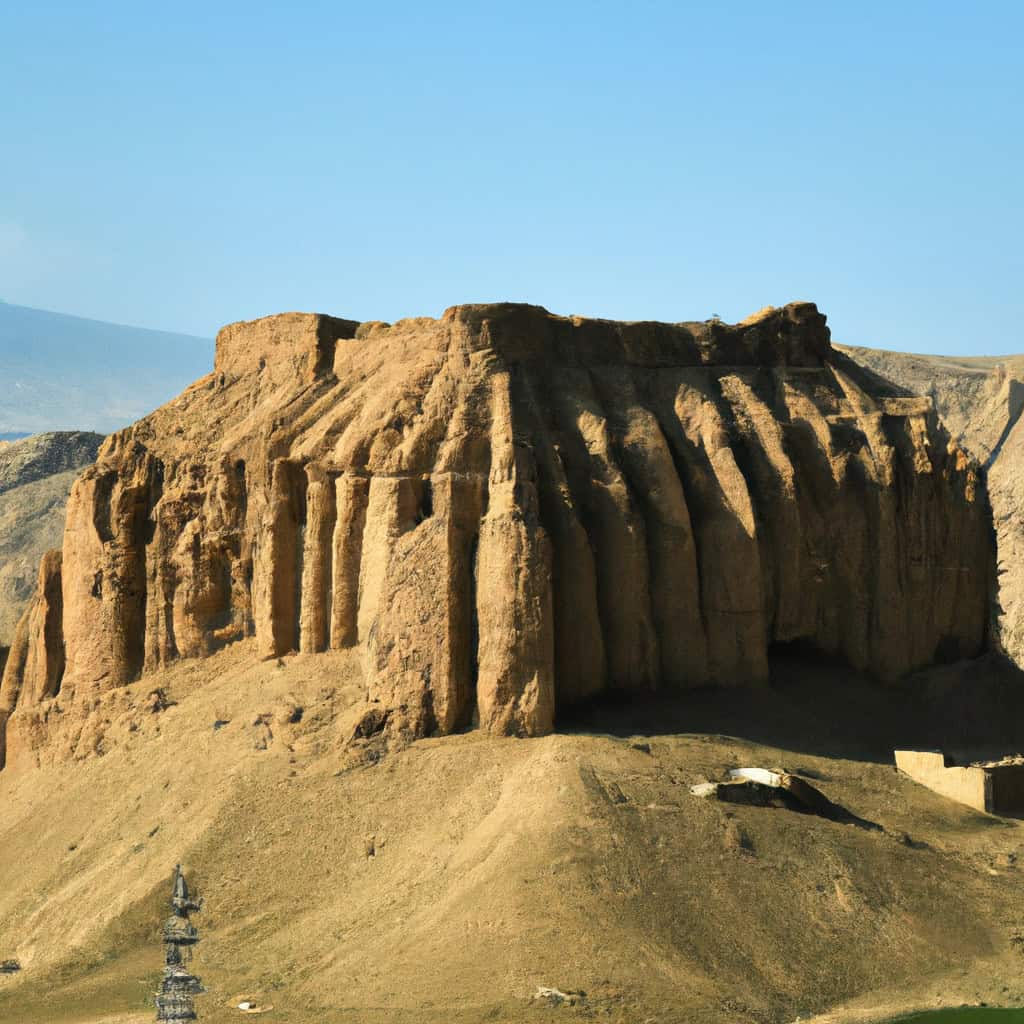Qala-e Kaphari in Bamiyan, is one of many fascinating sites that both foreign visitors and local tourists can explore while they visit Afghanistan and exploring Bamiyan Province. Nestled amidst the rugged terrains and craggy landscapes of Afghanistan lies this gem often radiating a stark contrast to the surrounding wilderness yet blending seamlessly with it. Qala-e Kaphari is a captivating architectural marvel that whispers tales of a bygone era with every pebble and stone, making it a must-visit for those who are intrigued by history and the evolution of cultures.
Qala-e Kaphari Most Important Events
- The Construction of Qala-e Kaphari: The construction of Qala-e Kaphari is considered to be the most impactful historical moment. It played a critical role in molding the cultural and architectural trajectory of the region.
- The Invasion of Genghis Khan: The invasion by the Mongols led by Genghis Khan profoundly altered the region, including Qala-e Kaphari. This marked a transformative era in its history and influenced its architectural character.
- The Rediscovery: The rediscovery of Qala-e Kaphari in the 20th century brought global recognition to this historical site, giving it a much-deserved spot in the world’s cultural and historical map.
History of Qala-e Kaphari in Bamiyan
The history of Qala-e Kaphari dates back to antiquity. The intricate carvings and architectural flourishes suggest a rich cultural lineage traced back to the Kushan Period of ancient Afghanistan. As largely believed by historians, the grandeur of Qala-e Kaphari is a reflection of the then thriving Buddhist culture in the region. This site was an important center of Buddhist learning and a testament to the affluence and cultural sophistication of the time.
In the 13th century, however, the region came under the siege of Mongol invasions led by Genghis Khan that marked a period of substantial alterations, including Qala-e Kaphari. The invasion led to a significant transformation in the architectural and cultural landscape of the region. The Mongols left an indelible imprint on this archaeological site, as displayed in the unique blend of architectural styles found today.
In the 20th century, Qala-e Kaphari was rediscovered, bringing global attention to this unique historical site. Since then, it has been a field of interest for archaeologists and historians across the world. This newfound recognition added immense value to the legacy of Qala-e Kaphari, immortalizing it as a special part of world history.
Why It’s Important to Afghan History
Qala-e Kaphari plays a very significant role in Afghan history. This archaeological site serves as a physical manifestation of the rich cultural and historical tapestry of Afghanistan. The multifaceted architectural influence witnessed in Qala-e Kaphari mirrors the country’s diverse historical course, displaying layers of different eras, cultures, and influences.
Furthermore, Qala-e Kaphari stands as proof of Afghanistan’s ancient connection with Buddhism. As Bamiyan once brimmed with Buddhist monastic establishments, Qala-e Kaphari displays the mastery of Buddhist art and architecture, reaffirming the country’s rich and diverse cultural identity.
Why to Visit Qala-e Kaphari
A visit to Qala-e Kaphari is like taking a journey back in time, tracing the historical trajectory of the region through the beauty of its ruins. The intriguing ensemble of carvings and architectural elements whisper tales of their time, enhancing the appeal of this destination.
The scenic surroundings further elevate the charm of this site. Located at the base of the rugged cliffs of the Bamiyan valley, Qala-e Kaphari is enveloped by an air of tranquility, making it a refreshing escape for nature and history lovers.
- The majestic architecture that stands as a testament to historic craftsmanship.
- The rich historical and cultural insights.
- Stunning panoramic views of the Bamiyan Valley.
- The serene and tranquil environment.
- The charming local culture and hospitality.
Qala-e Kaphari, situated in the Bamiyan Province of Afghanistan, is easily accessible from the city of Bamiyan. It can be reached through a short drive from the city center. The best time to visit is during the summer months when the weather is mild.
Cultural & Tourist Significance
Qala-e Kaphari holds immense cultural significance as it stands like a chronicle that sheds light on the evolution of Afghan culture. The amalgamation of architectural styles observed here tells the tale of the influences that braided together over time to shape the region’s cultural identity. The nuances of its architecture and composition serve as a vivid narration of its historical timeline.
With the resurgence of tourism in Afghanistan, Qala-e Kaphari is attracting visitors from around the world, making it an integral part of the country’s tourism portfolio. Its unique blend of history, culture, and natural scenery positions it as an appealing destination for tourists.
A visit to this site also provides a unique opportunity to interact with the local community. Their warm hospitality coupled with tantalizing regional cuisine adds more color to the cultural exploration.
Interesting Facts
Interestingly, Qala-e Kaphari was once a thriving center of Buddhist learning, a fact often shadowed by the region’s current religious dominance. This historical site serves as a reminder of Afghanistan’s multicultural past.
Another little-known fact about Qala-e Kaphari is that despite being centuries old, the site remained hidden from global recognition until recently. Its rediscovery in the 20th century provided a groundbreaking perspective to Afghan history, changing the way we perceive it.
There are also legends circulating around the local communities about hidden tunnels and secret chambers filled with historical treasures within the site. While these tales add intrigue to the aura of Qala-e Kaphari, they also fuel the curious minds to explore and unravel the mysteries of history.
In sum, a visit to Qala-e Kaphari embodies a rich heritage exploration journey. From understanding cultural underpinnings to witnessing historical marvels, the experience is like an interactive history textbook about Afghanistan’s past and cultural evolution. And, with every stone, every carving, and every ruin at Qala-e Kaphari, the wonders of Bamiyan Province and Afghanistan unfold!

